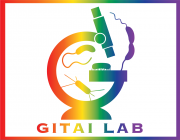Mode of action and resistance studies unveil new roles for tropodithietic acid as an anticancer agent and the γ-glutamyl cycle as a proton sink.
Type
While we have come to appreciate the architectural complexity of microbially synthesized secondary metabolites, far less attention has been paid to linking their structural features with possible modes of action. This is certainly the case with tropodithietic acid (TDA), a broad-spectrum antibiotic generated by marine bacteria that engage in dynamic symbioses with microscopic algae. TDA promotes algal health by killing unwanted marine pathogens; however, its mode of action (MoA) and significance for the survival of an algal-bacterial miniecosystem remains unknown. Using cytological profiling, we herein determine the MoA of TDA and surprisingly find that it acts by a mechanism similar to polyether antibiotics, which are structurally highly divergent. We show that like polyether drugs, TDA collapses the proton motive force by a proton antiport mechanism, in which extracellular protons are exchanged for cytoplasmic cations. The α-carboxy-tropone substructure is ideal for this purpose as the proton can be carried on the carboxyl group, whereas the basicity of the tropylium ion facilitates cation export. Based on similarities to polyether anticancer agents we have further examined TDA's cytotoxicity and find it to exhibit potent, broad-spectrum anticancer activities. These results highlight the power of MoA-profiling technologies in repurposing old drugs for new targets. In addition, we identify an operon that confers TDA resistance to the producing marine bacteria. Bioinformatic and biochemical analyses of these genes lead to a previously unknown metabolic link between TDA/acid resistance and the γ-glutamyl cycle. The implications of this resistance mechanism in the context of the algal-bacterial symbiosis are discussed.

